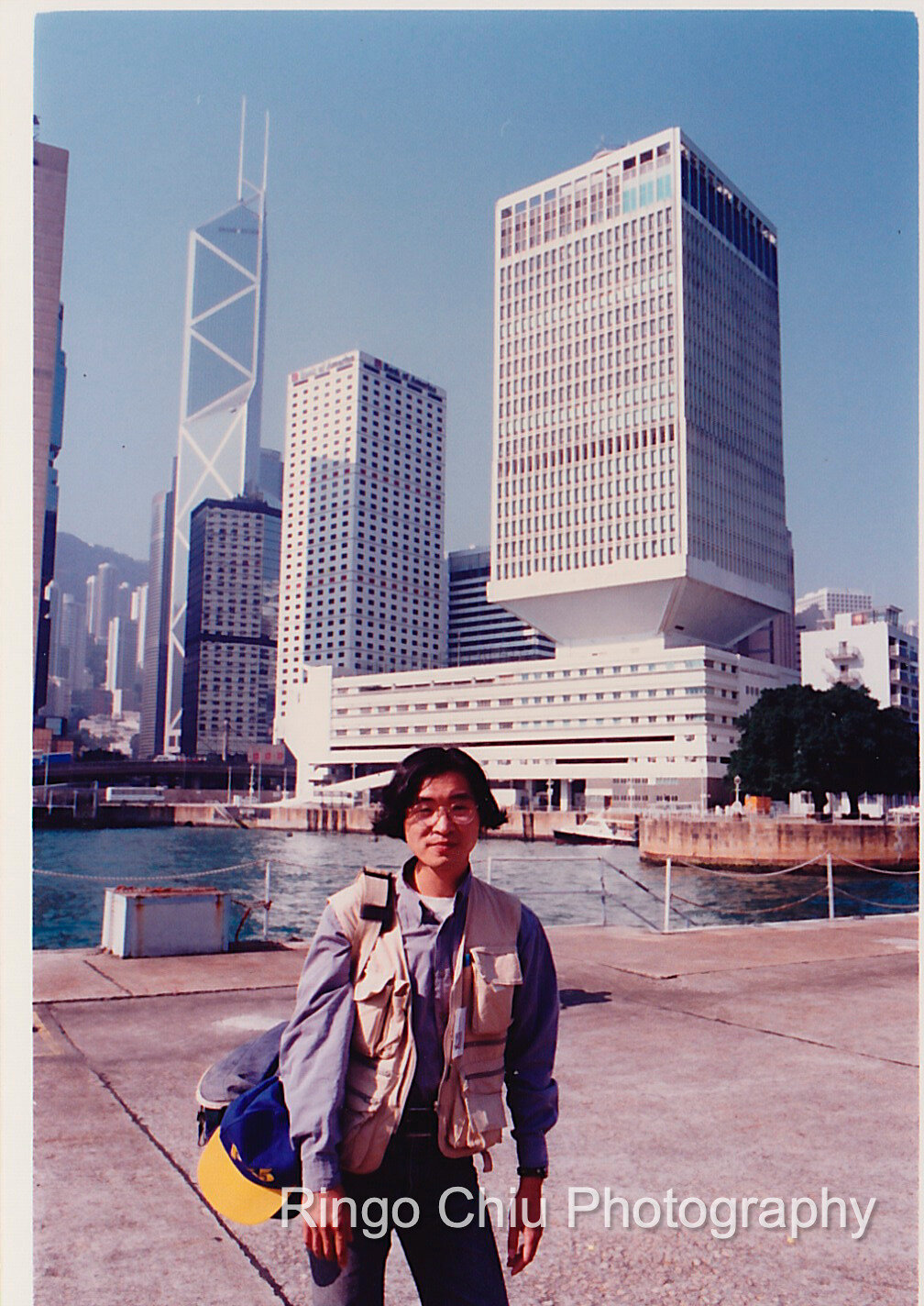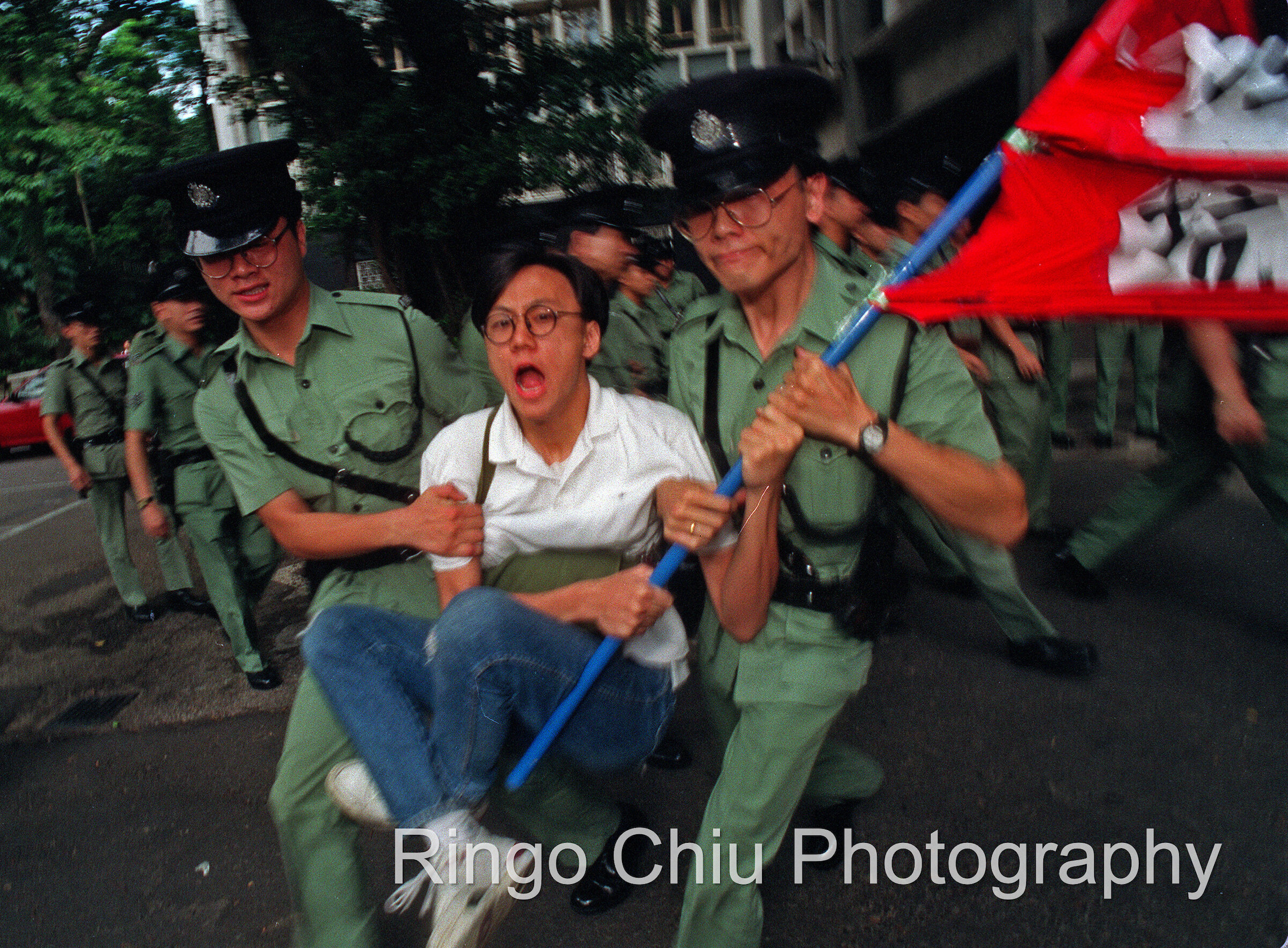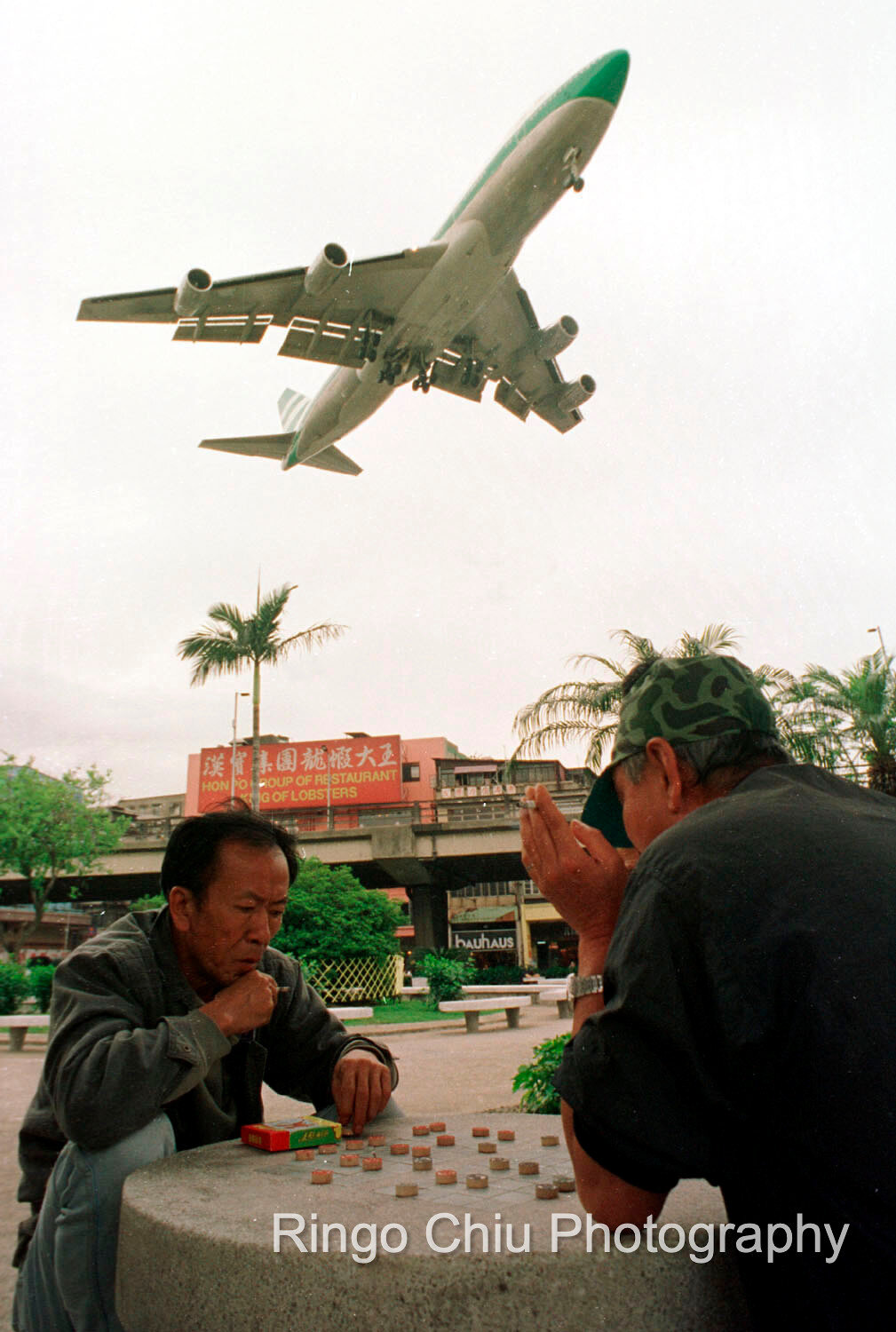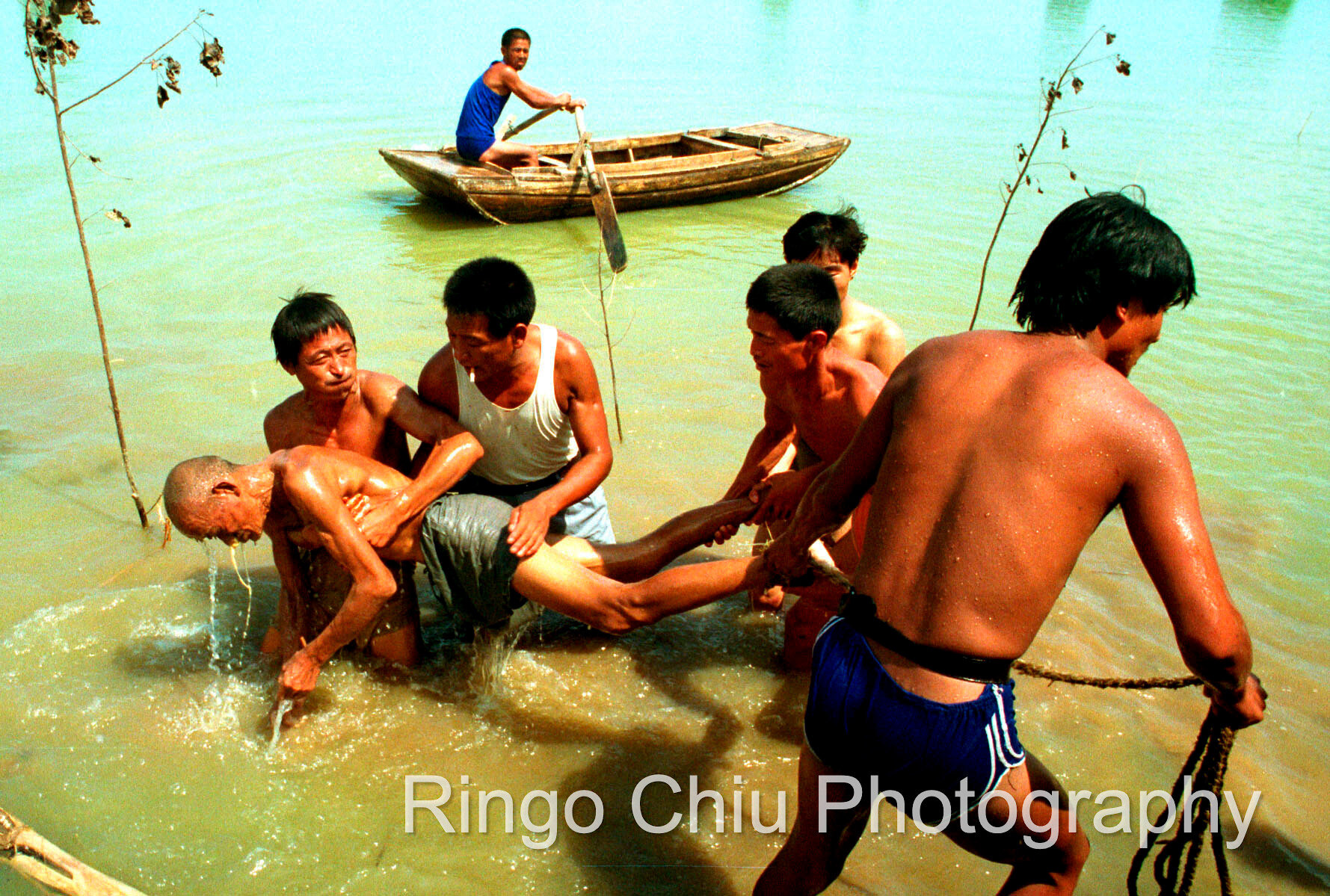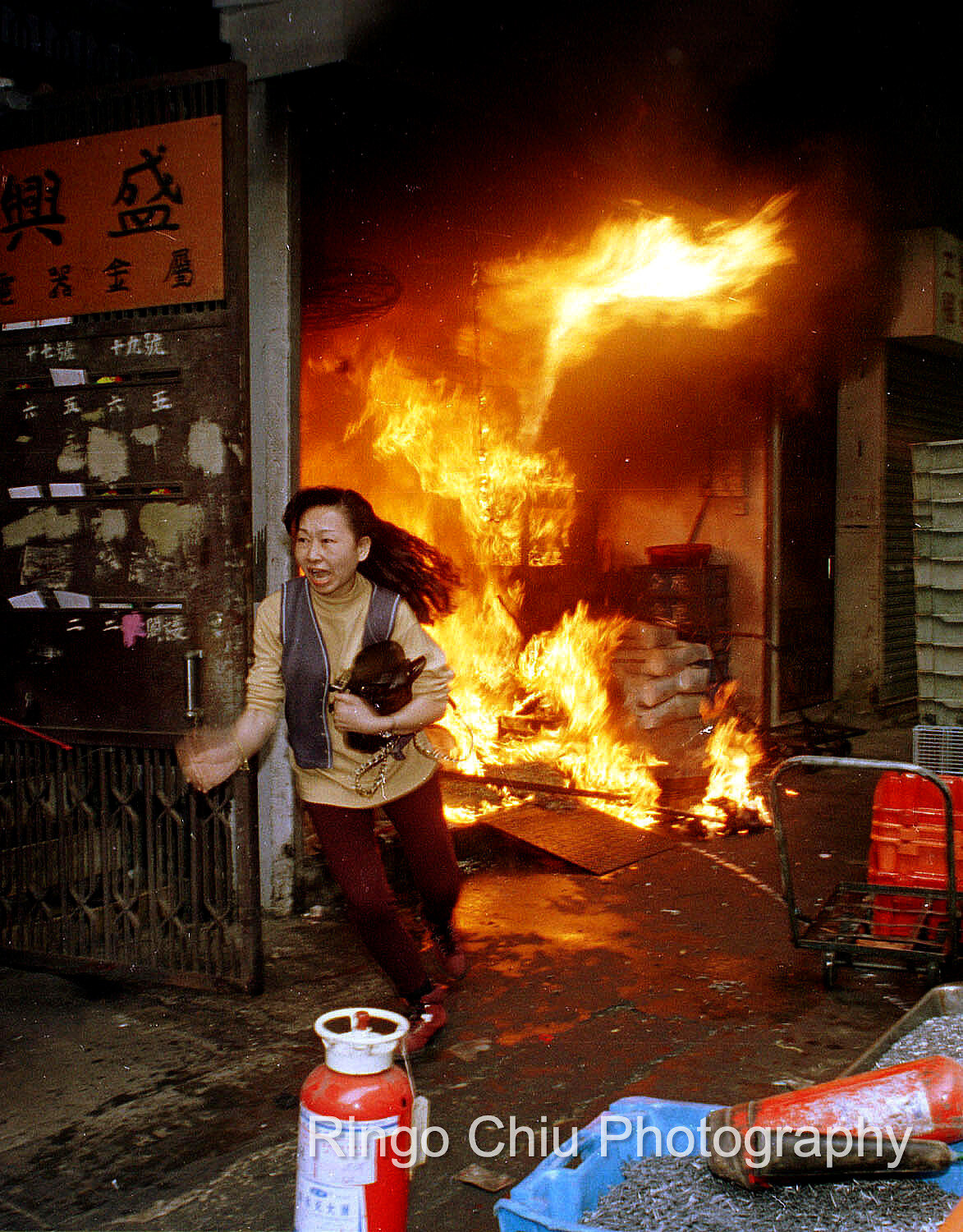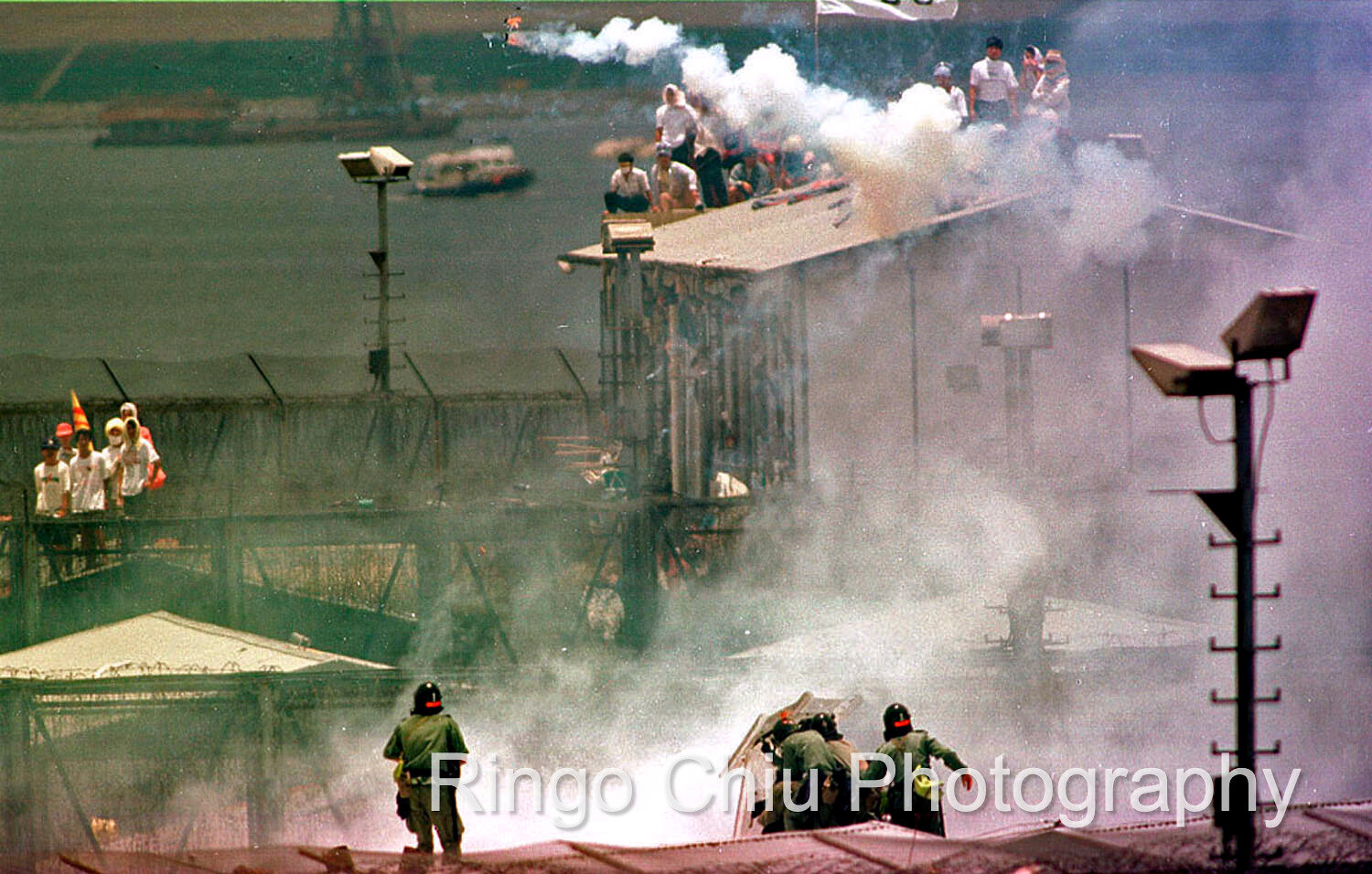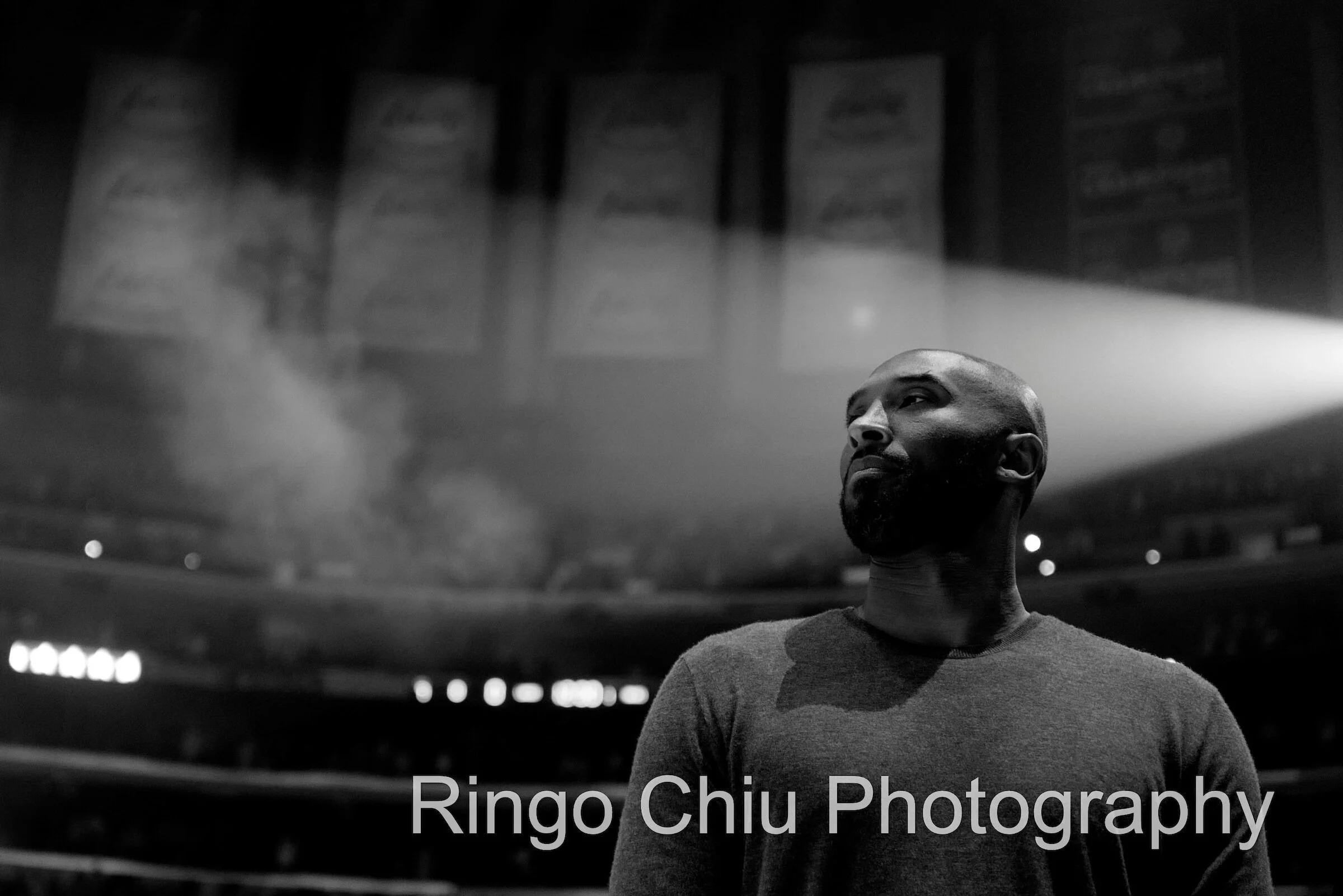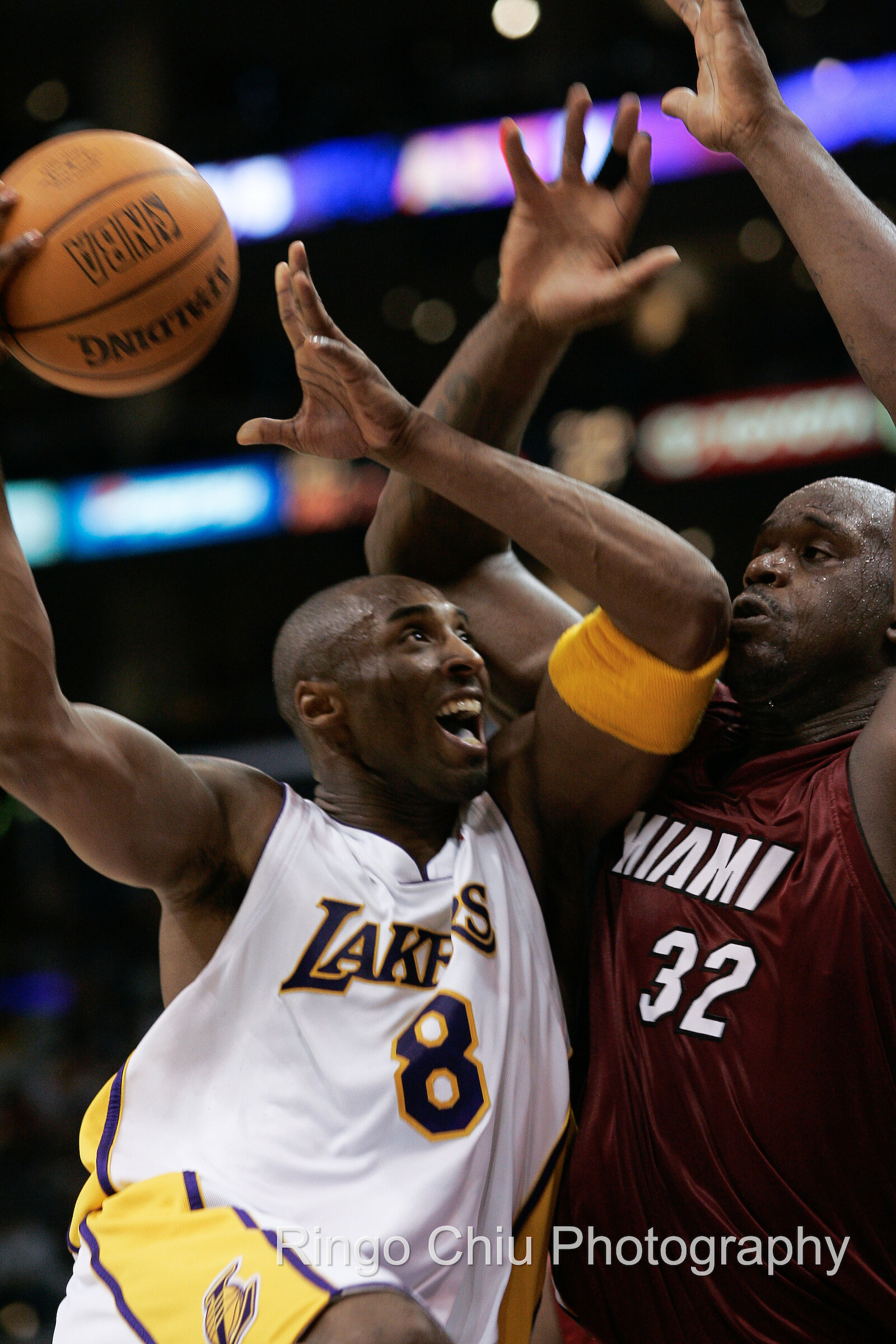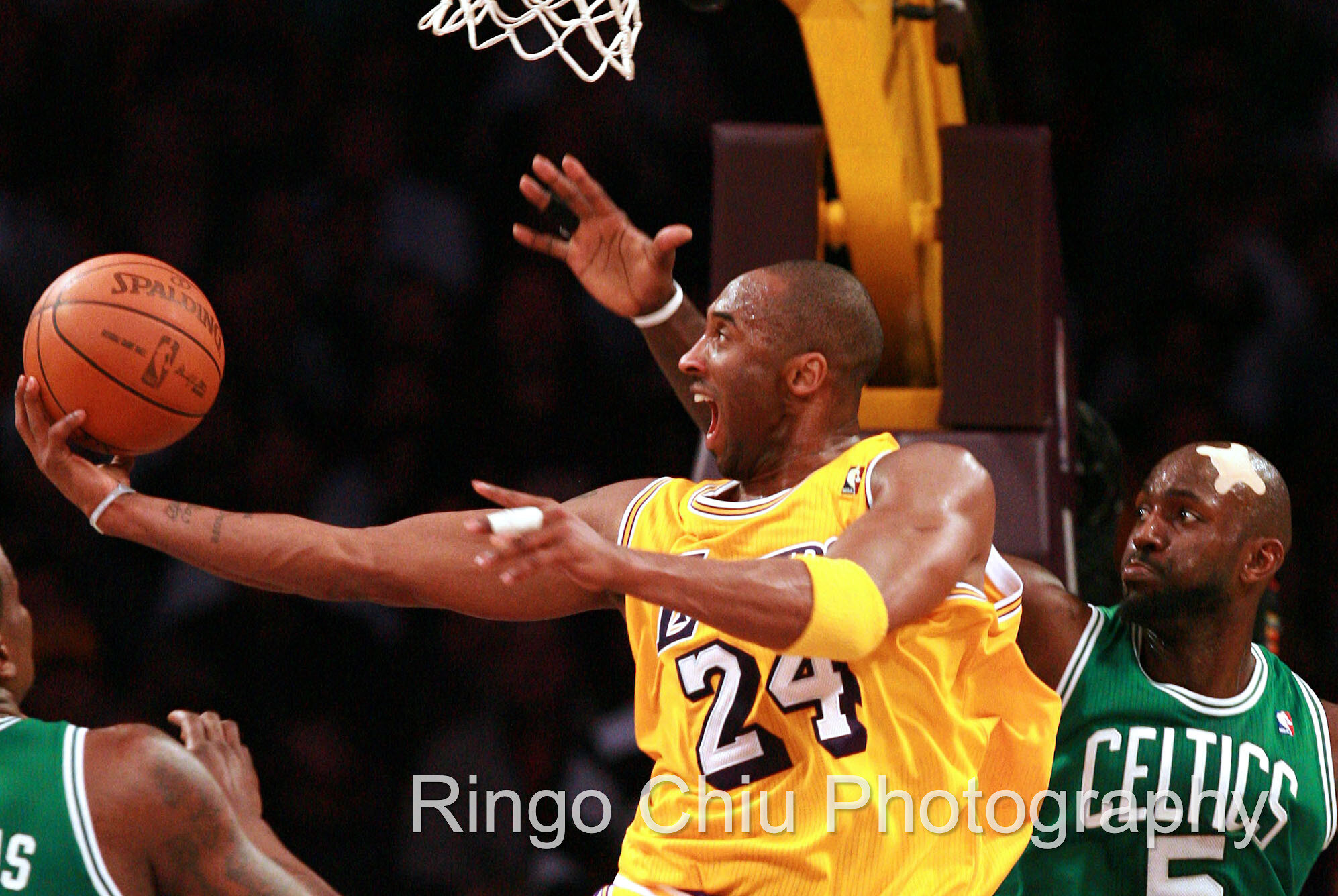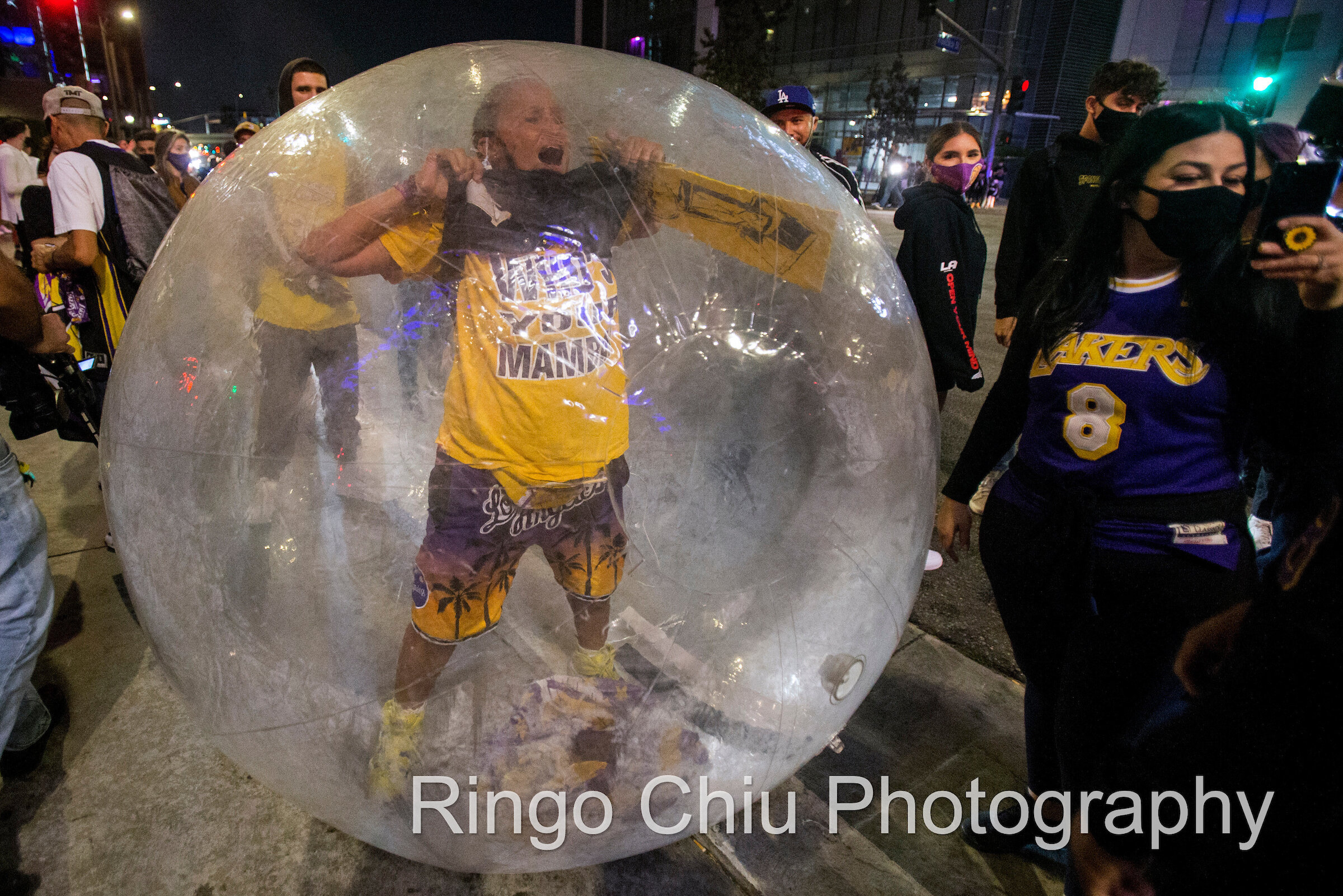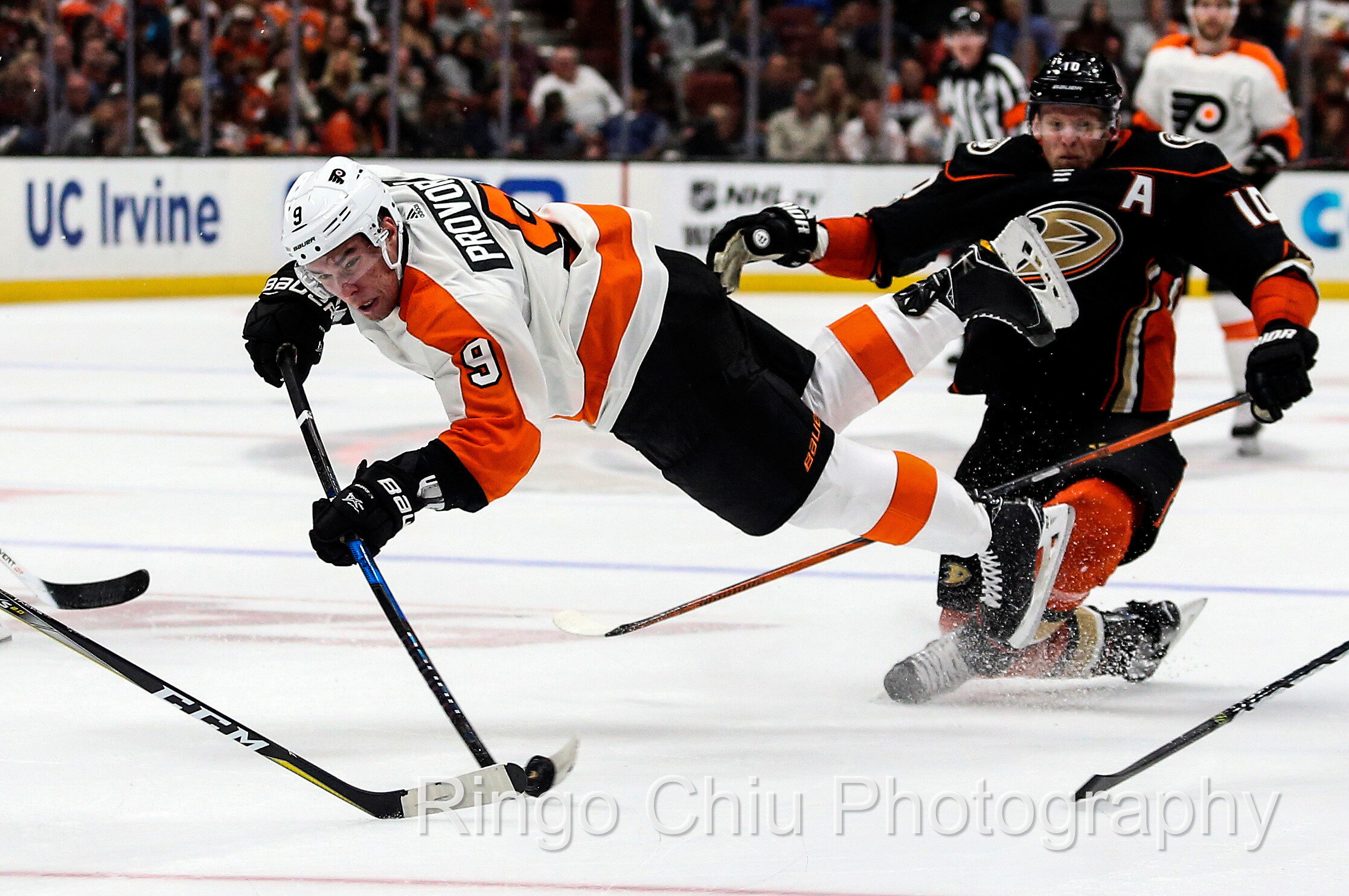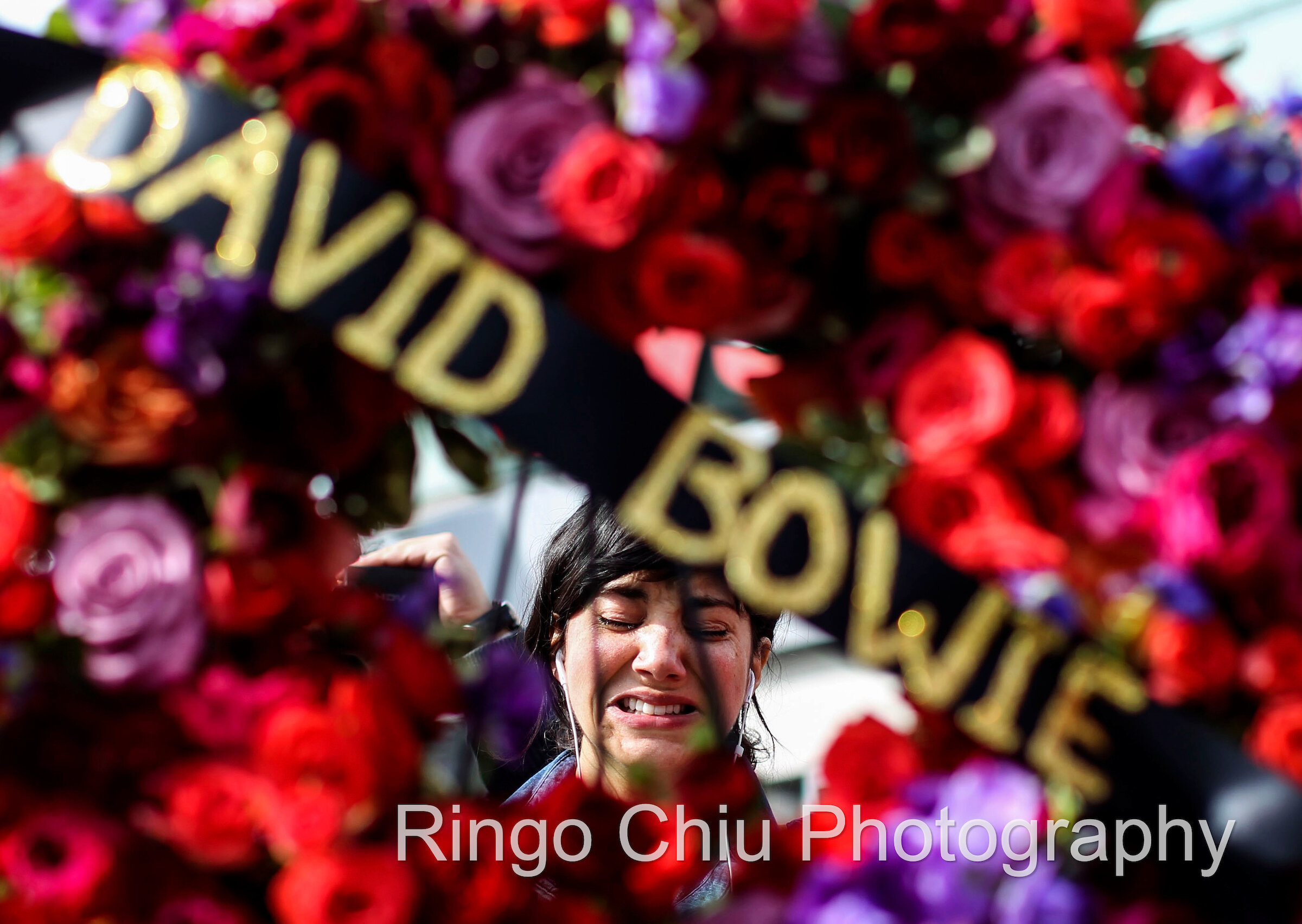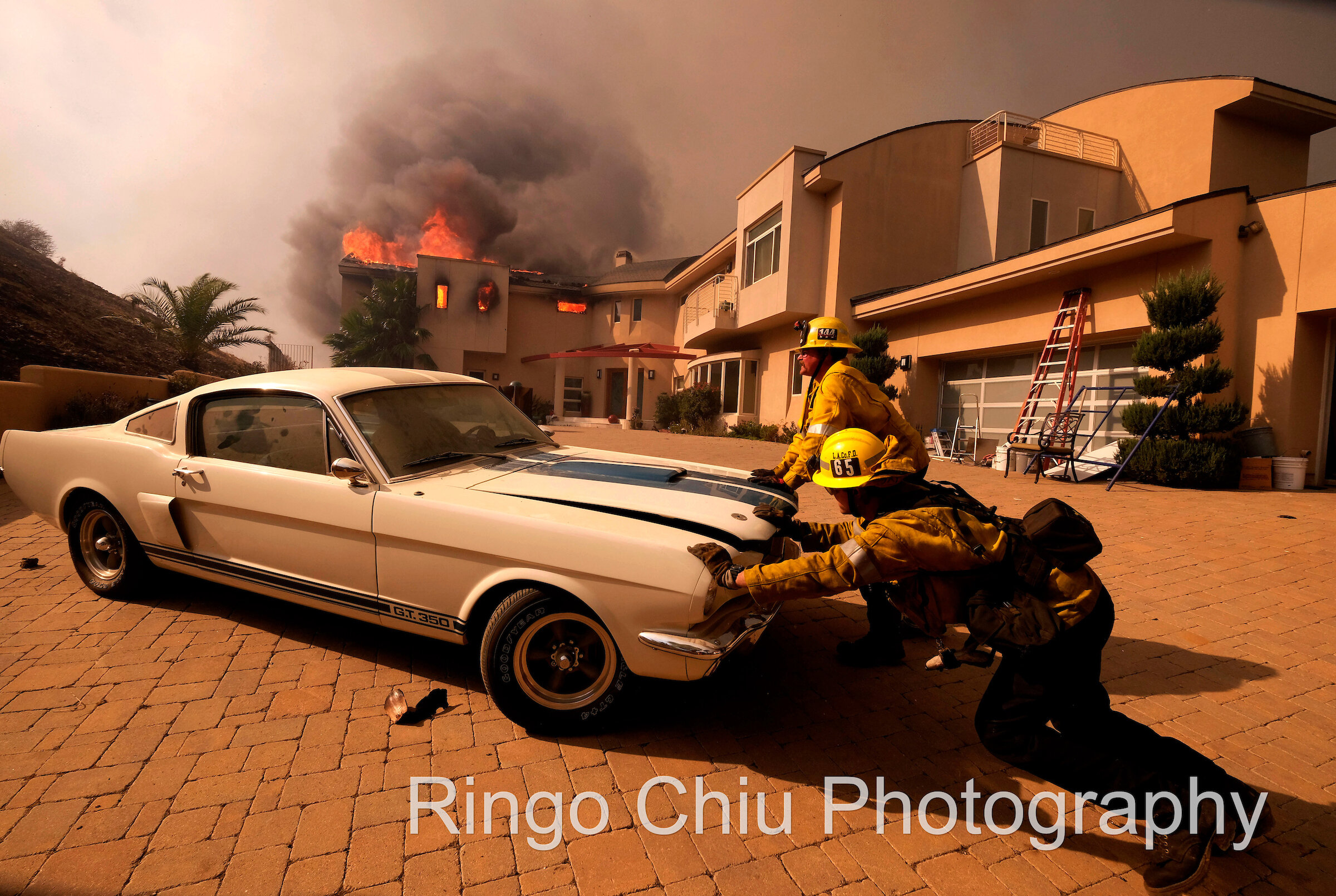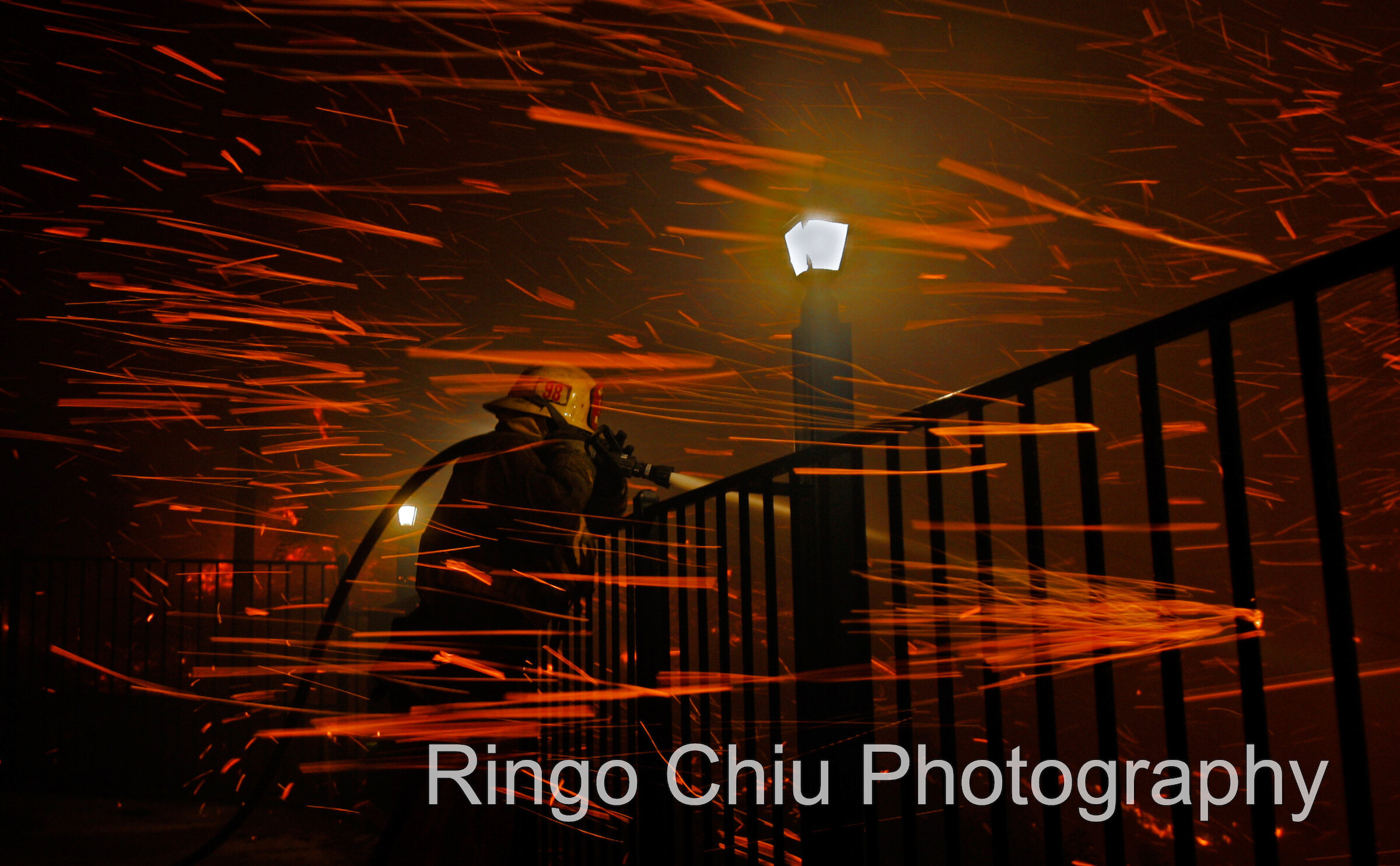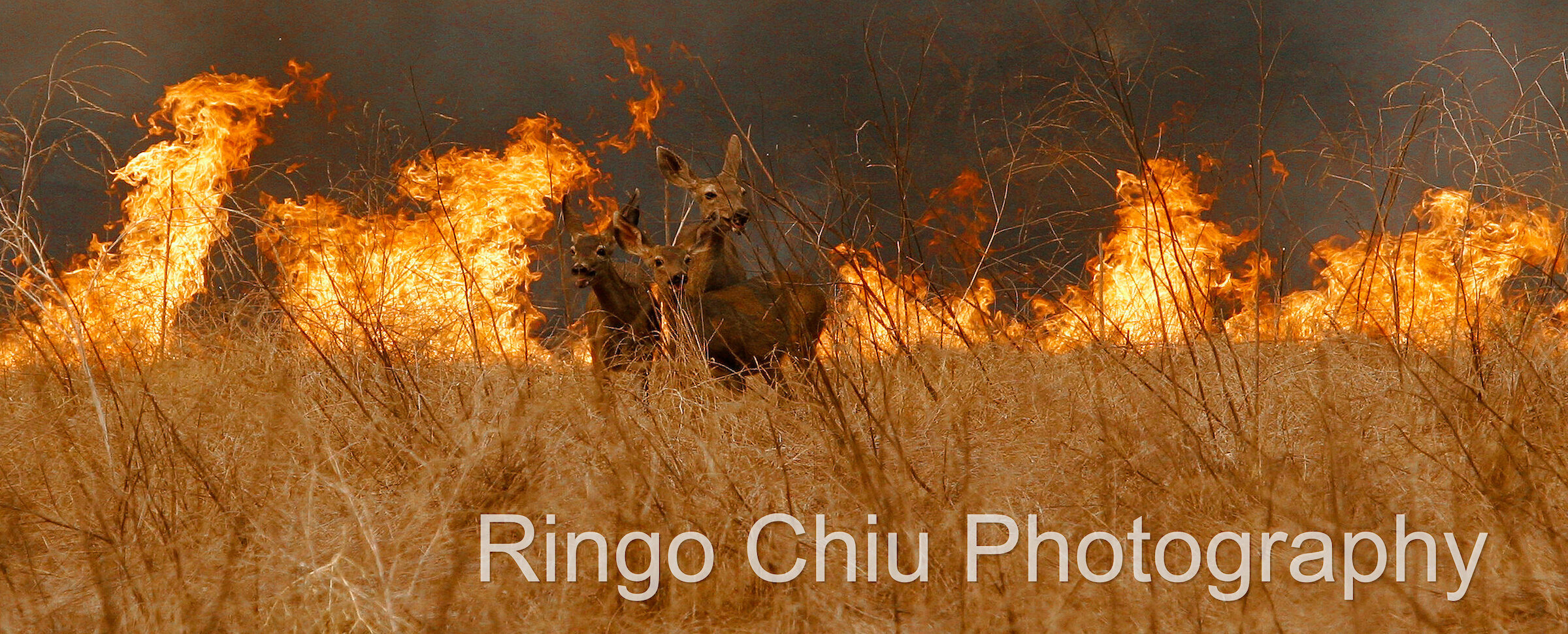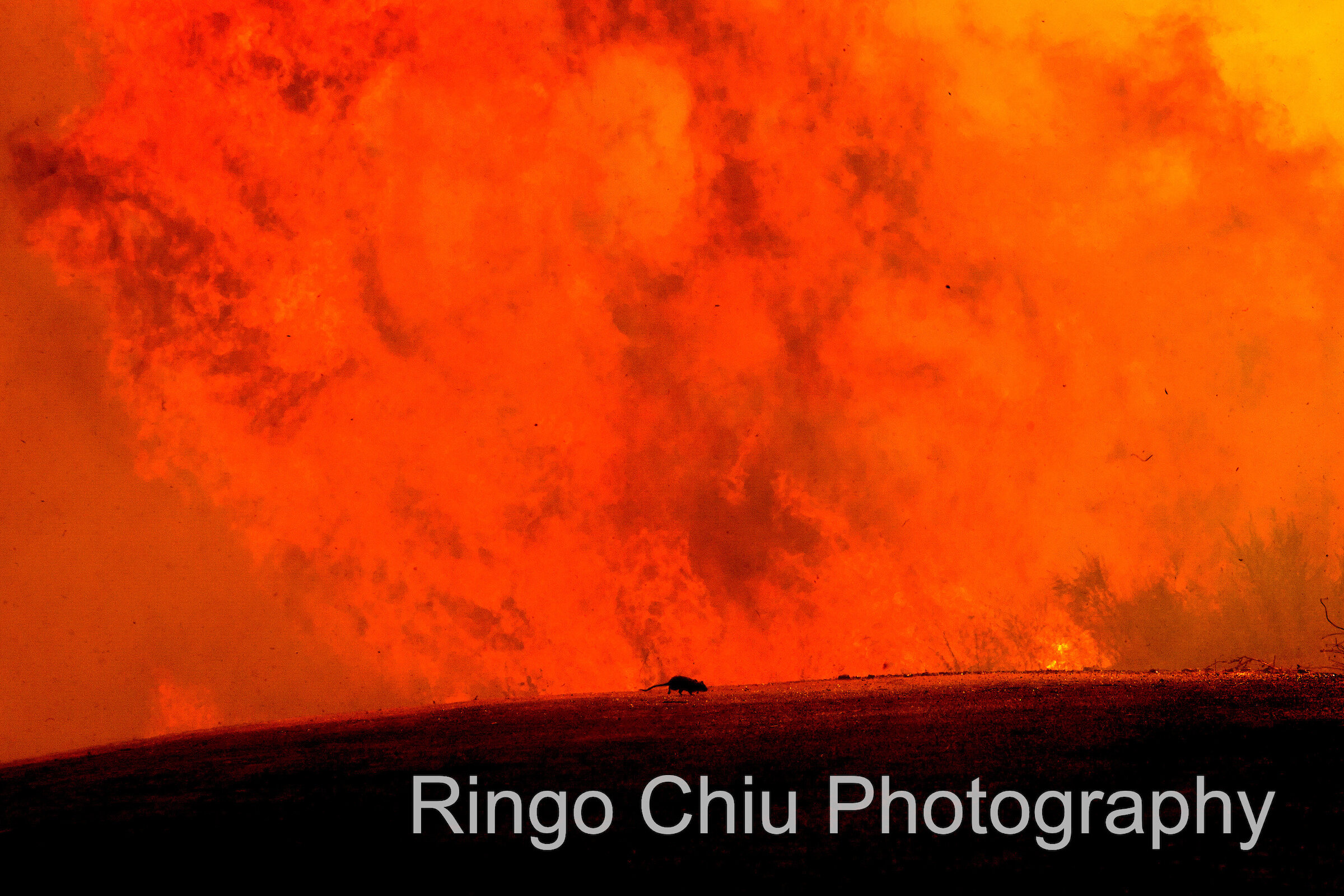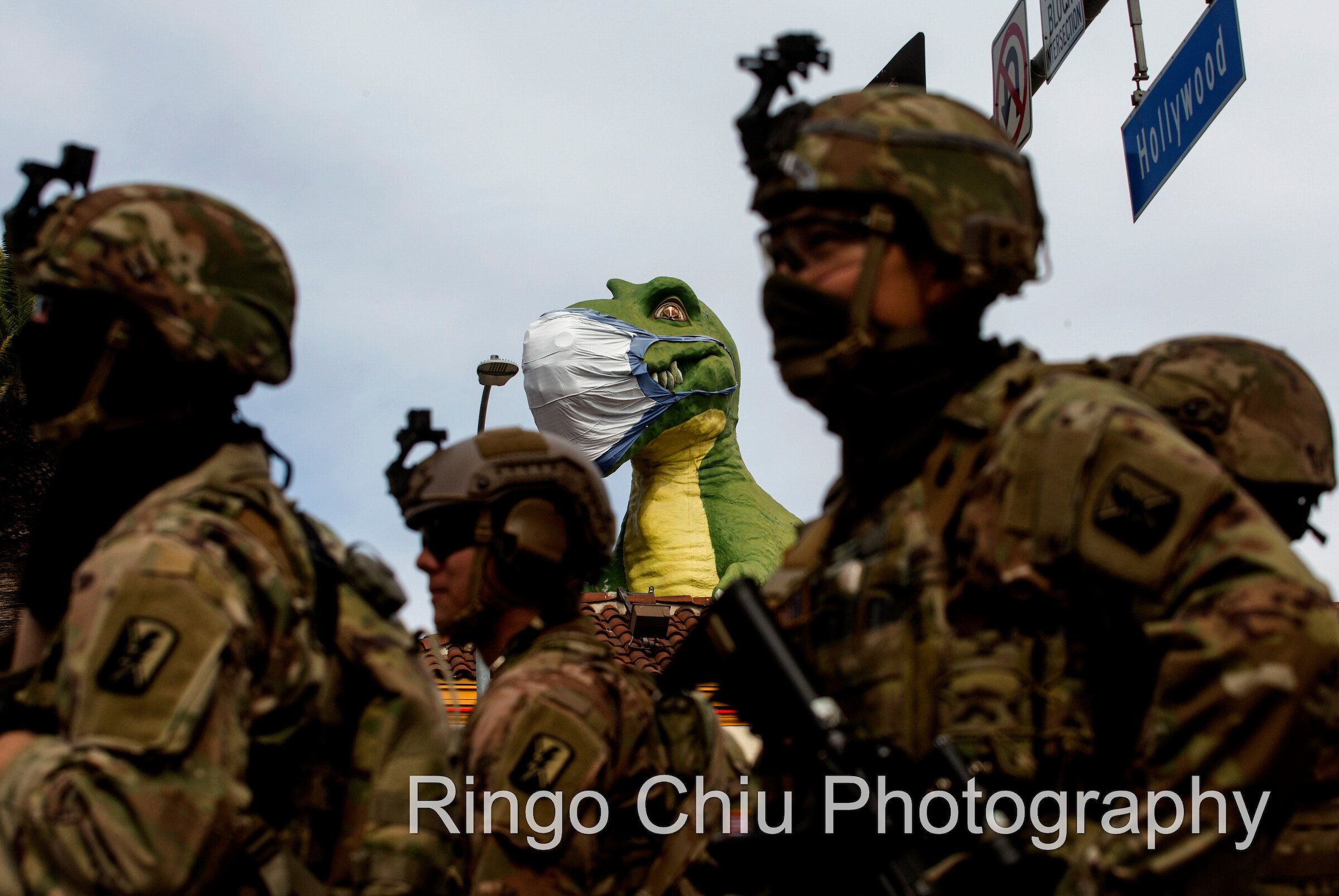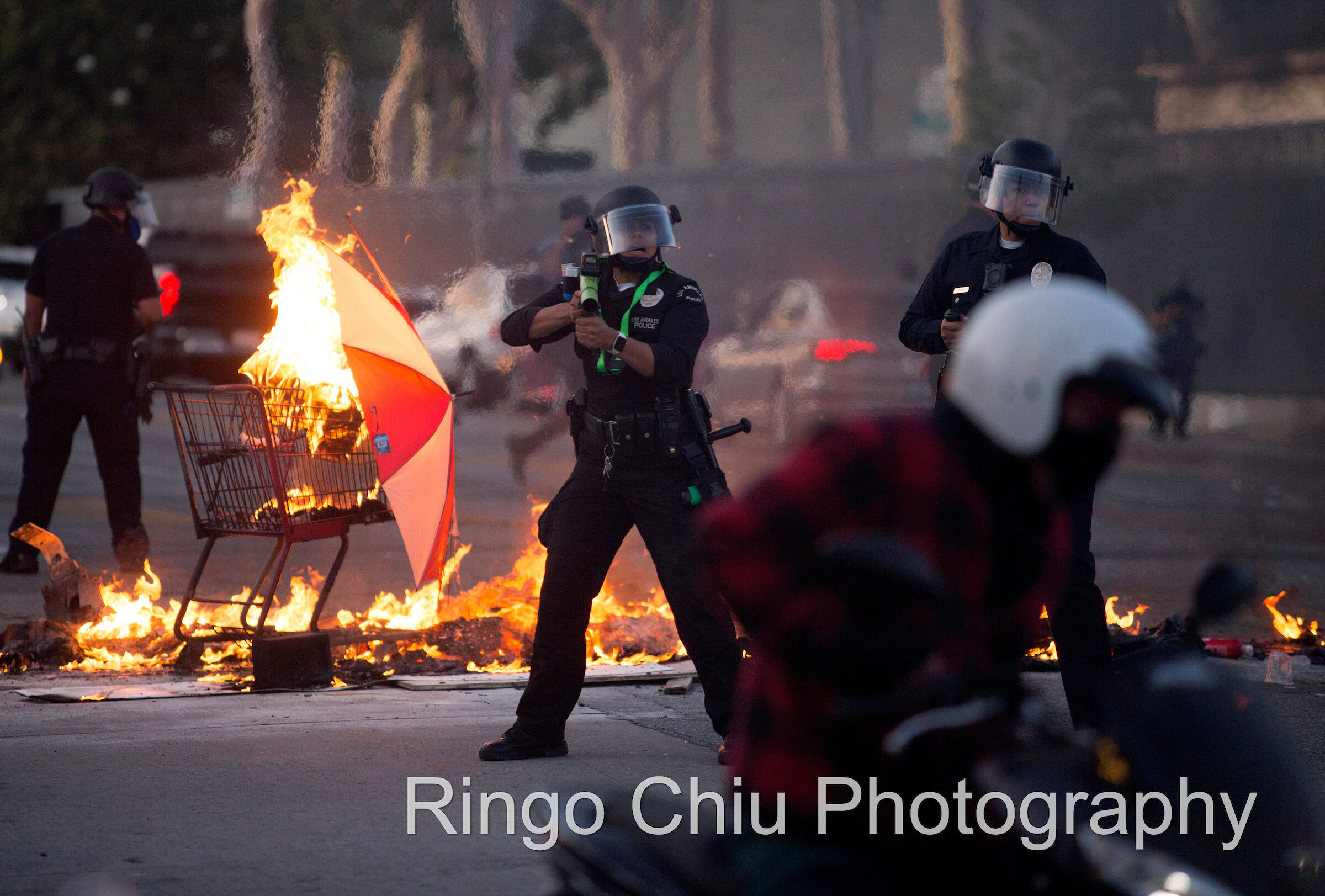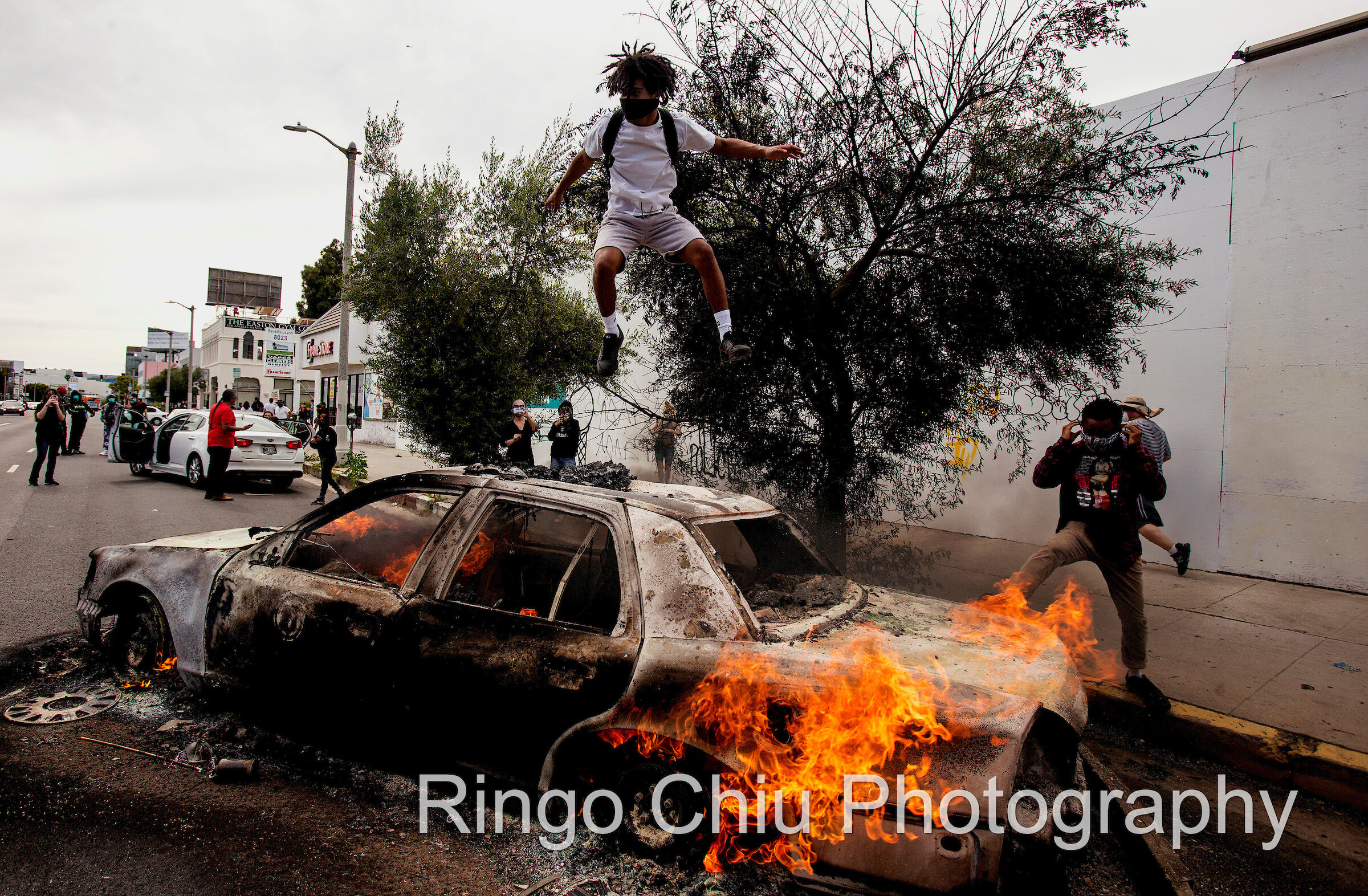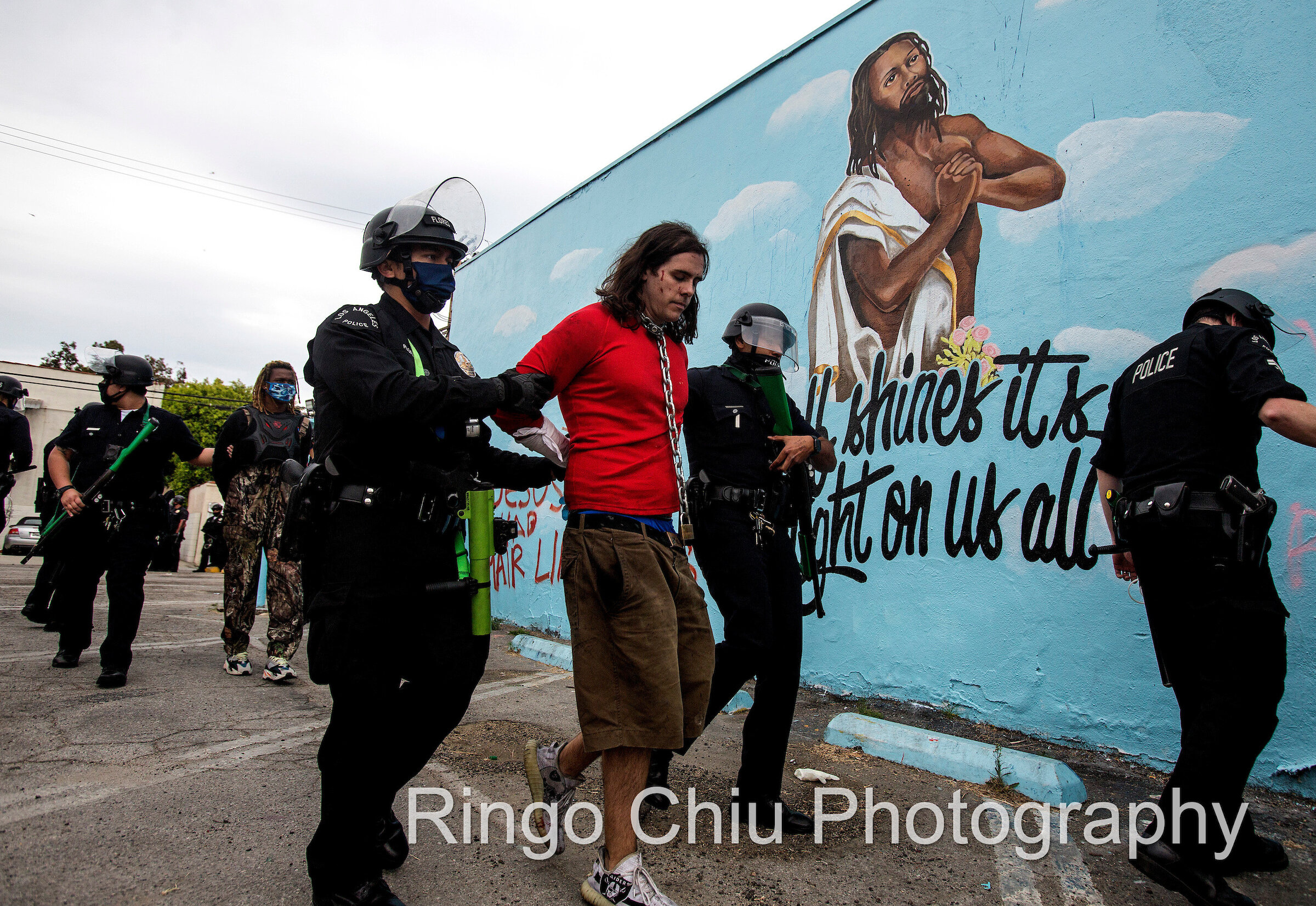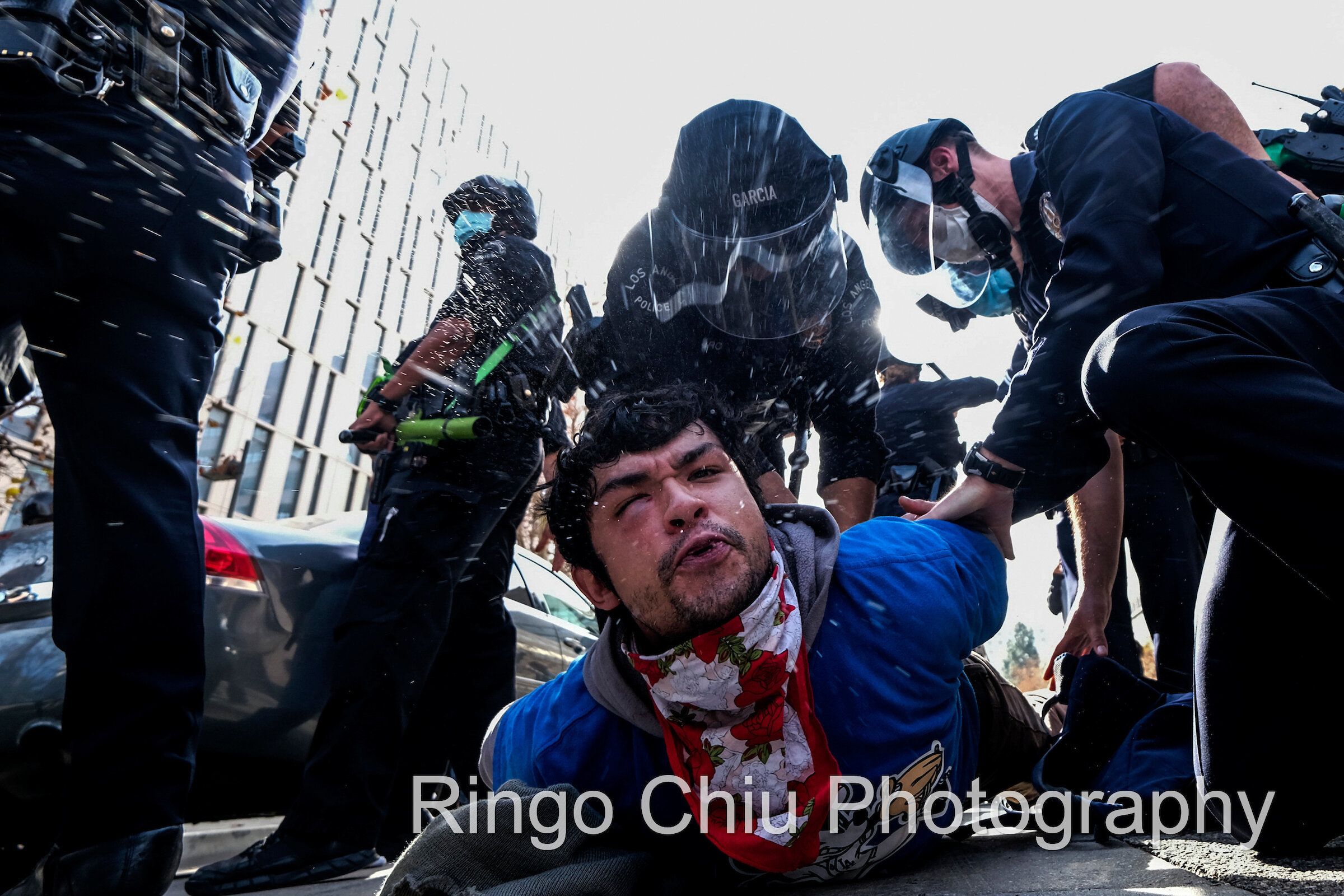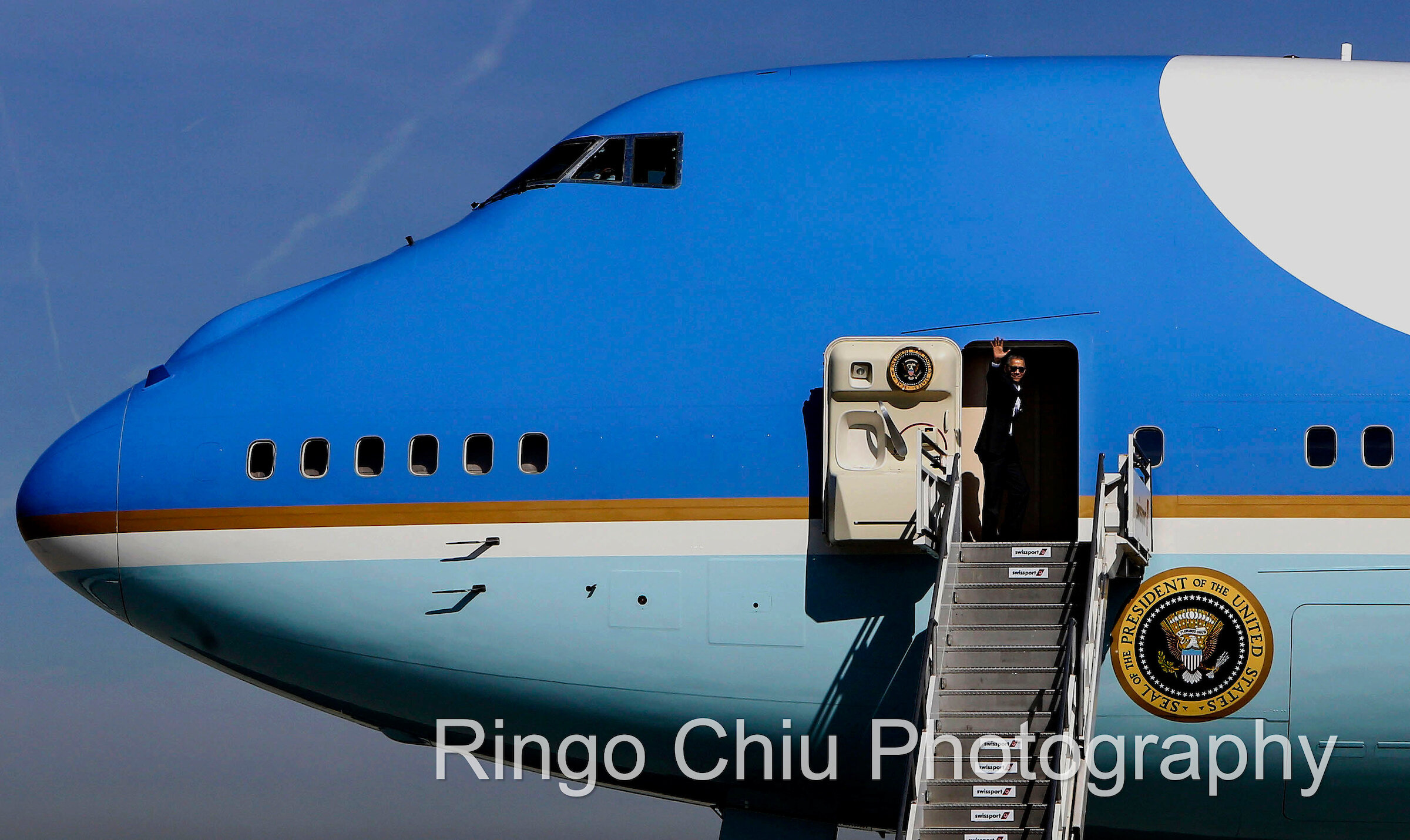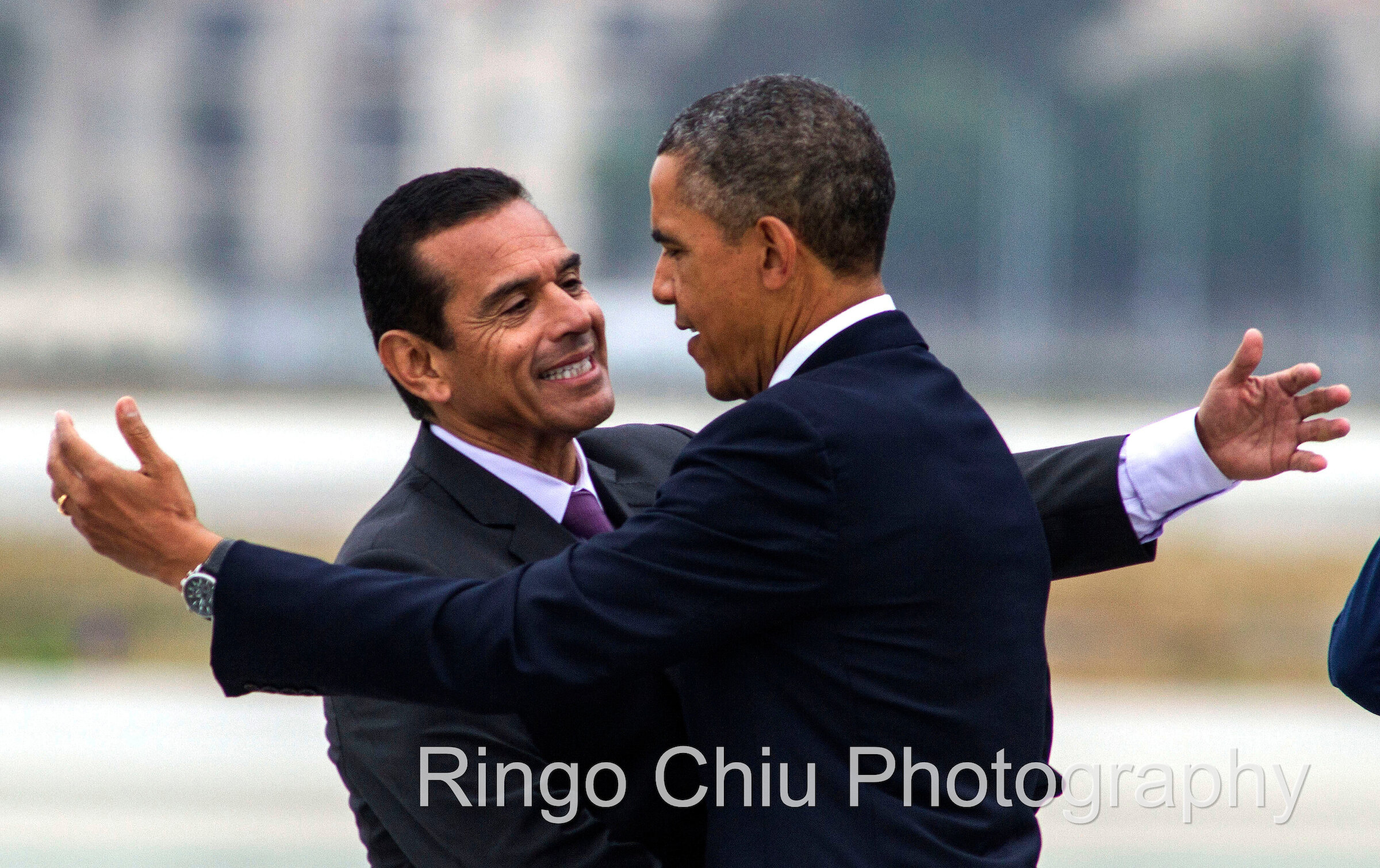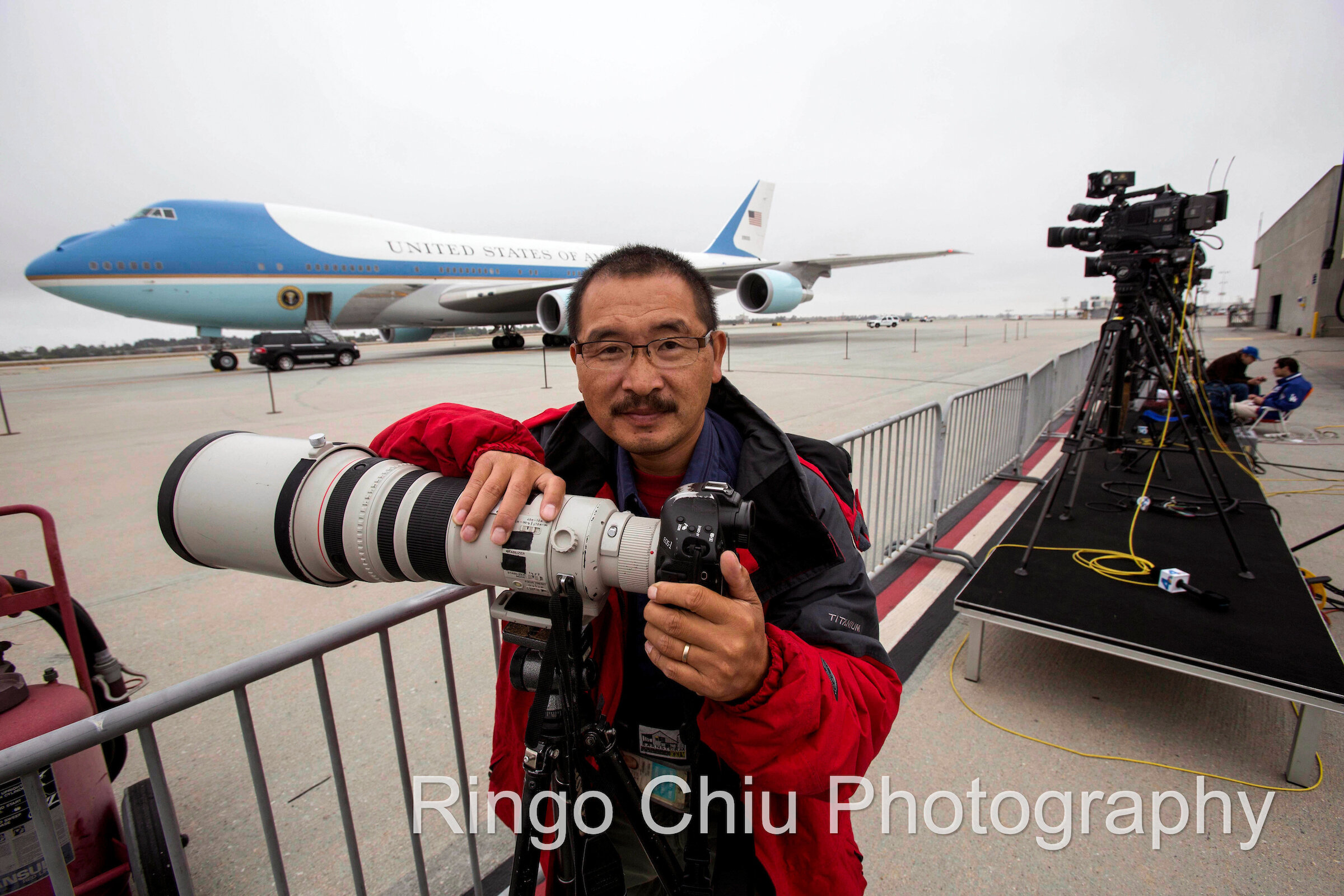Member of the Month July 2021 Ringo Chiu "The Machine"
First of all, I really appreciate Genaro Molina for giving me a nickname, "The Machine" as I love it very much since it describes me perfectly since I was working everywhere last year during the pandemic.
Photographer Ringo Chiu at the Yucaipa Fire in Oak Glen, Calif., Saturday, Sep. 5, 2020. (AP Photo/Damian Dovarganes)
What is your current position and who is your employer?
I am a freelance photographer as well as a staff photographer for the Los Angeles Business Journal.
2020 in Los Angeles: Ringo covers BLM protest in downtown Los Angeles. (Photo by Nick Ut)
When did you become a PPAGLA member?
I have been a member since I was a college student in 1998.
2014 Los Angeles: Ringo covers the BNP Paribas Open in Indian Wells.
How long have you been a photojournalist and how did you get started?
I have been a photojournalist for 32 years.
(Sorry and forgive me, I am going to answer more than just the question as I would like to share my story)
I first got started to know about photography at the age of 10, when my father went and bought a used camera from a recycling street vendor. It was a Yashica Electro 35 GSN and it was originally intended to be used as the family camera, but the camera did not come with a manual and no one in my family knew how to operate it. Eventually, I picked up the camera and played around with it, the way one would a toy. I grew very attached to it and brought it with me to any family or school event and very soon it became my everyday hobby. However, film and processing during that time was very expensive, so in order to continue and study my hobby, I would make extra tip by helping my parents with work that they took home such as assembling plastic flowers and making various garment products. When I entered secondary school, I began to earn more by doing part-time jobs at garment factories with one of my brothers, and because the only other extra curricular I attended was basketball, I was able to put everything I earned into funding my photography hobby. So most of my school time was spent at the school's darkroom and basketball court instead of the classroom.
1981 in Hong Kong: Ringo with his first camera Yashica Electro 35 GSN.
After graduating from secondary school, I decided to try becoming a police officer, but was not accepted, so I started working full time with my brother, who was a contractor for a garment factory. My job
was very tough, as I was ironing wool sweaters and hats in intense heat and no AC for about a year. Being a garment worker made very good money in Hong Kong, almost double the salary of a police officer, but my father
encouraged me to find an office job to have better opportunities for the future. One day I saw an advertisement in the newspaper looking for a darkroom technician with no experience required as well as provided training, which caught my interest. Even though the pay was almost three times less than what I was currently making as a garment worker, my father encouraged me to take the job because he thought that the newspaper industry could help provide better opportunities for my future. During the six months I worked in the darkroom, I had won a chance to shoot a news event that helped me start my career as a photojournalist. In that same year, I was invited to work for the largest Chinese newspaper in Hong Kong. I had also started studying full time for a Journalism and Mass Communication degree at my 4 year college. During that time, I was very lucky to have my photos chosen three years consecutively as winners for Photography of the Year as well as being promoted to Chief Photographer before leaving to the US.
1990: Police try to stop the illegal immigrants from China as they stormed a dog track in hopes of obtaining residency rights during an amnesty for illegal immigrants in Macao.
In 1996, I left Hong Kong with my wife to pursue my dream in Los Angeles. I wanted to get a more formal education related to photojournalism since there was no such major in Hong Kong schools. I studied at Santa
Monica college and was very fortunate to have Julia Dean as my first photojournalism professor. I got the chance to view the works of professionals that she invited during our class. I still remember a photo of Mother Teresa reading a book that LA Time staff photographer Allen Schaben showed in our class. His inspirations made me want to be like him and also reminded me that I needed to put all my effort into my work. After studying at Santa Monica College for 2 years, I transferred to California State University of Northridge and started my photojournalism program. I would say that moment was an important turning point for my career. Because of my language barrier, communication with others was a very big obstacle for me, but the professors at CSUN never gave up on me. After explaining to them my study goals and showing them my portfolio, they designed a special major in order to fit my academic path and help me pursue my future career. During my time at CSUN I was lucky enough to get scholarship from the school and work for the school newspaper, the Daily Sundial. I was given the opportunity to learn about page design and newspaper production as well as cover a wide spectrum of events, such as football, basketball, soccer, softball, and track. In 1999, I was accepted as an intern for the LA Times and work with my mentors, Bois Yaro and Steve Osman, who showed me how to work on breaking news and around police, Anne Cusack and Mel Melcom, who showed me how to take great portraits, and Ricardo DeAratanha, who showed me how to get better feature images. All of the knowledge I received from them then played a huge part in my career up until now.
Portrait of a student for CSUN photography class project.
After graduating from CSUN, I needed to make a big decision. Was I going to stay in the US or go back to Hong Kong? As an international student, I was required to have an employer or sponsor in order to stay in the US, so I
decided to stay and try to find a way to make a living. I had already been selling balloons years on the Santa Monica Pier in order to pay off my tuition. In addition to that, I worked as a freelancer for a few local newspapers, but they were unable to hire me full-time as I did not have a working permit.
Looking through a mask, a member of the Los Angeles Alliance for a New Economy is seen during a rally, May 14, 2013, in opposition to the possibility of billionaires Charles and David Koch buying the Los Angeles Times, in downtown Los Angeles.
Now, I really want to share a story with our PPAGLA students. I had a freelance contract from the LA Times after I finished my summer internship, but I never received a single assignment from them for almost a whole year. I
struggled a lot, and I remember a man who sent me a letter about my PPAGLA student photo contest result. He mentioned that he loved my work, but my breaking news photos weren't strong enough, which was why they chose another student as the winner. Regardless of that fact, that man continued to encourage me and asked me to call him if I needed any help. That man was Rick Meyer. After a brief phone call, Rick took me to the LA Times downtown office and introduced me to the editors there. I received my first assignment on the very same day, and since then I had become a part of their active freelance team, working every week. He not only helped get a job when I was struggling the most, but he also volunteered to write my letter on behalf of the PPAGLA to the Immigration Department for my permanent resident petition. Other photojournalists and editors that wrote letters to support my stay in the US included 1998 Pulitzer Prize winner, Clarence Williams. Without their support, my career would never have launched in the US. These individuals have also been my greatest motivators, pushing me to not waste the sacrifices and opportunities they have provided for me when I needed it the most.
Election 2020 California
Please share some career highlights:
Personally, I don't categorize events as big or small news. Whatever assignment I receive, I am already excited for and take on with my best effort. However, if I had to mention 1, I would pick my cover of the 9/11 aftermath in New York City. On the morning of 9/11, when I heard the news on television, I was shocked along with the rest of the world. I immediately thought that the next target may be in Downtown LA, so I drove down and waited in the streets for almost half the day and luckily nothing happened. But I still very much wanted to cover this historical event, so I called my two college buddies and the next morning, we drove for 50 hours non stop across the country to New York City. Once we arrived, we stayed for 72 hours to document the aftermath of ground zero. When we returned to Los Angeles, our school decided to hold a photo exhibition for the three of us and published a book with our photos along with other students' essays. I would say that that event holds a very memorable imprint on me, as I was not assigned to go and cover this event, yet I felt compelled to go.
Part of the remaining structure of the Ground Zero of World Trade Center in New York City after terrorist attacks collapsed both towers in the 911 attack, 2001.
What advice do you have for students and those hoping to become photojournalists?
I would say that this career is extremely tough and 100% passion driven. You cannot be driven by the paycheck, because most of the time you put in more than what you receive, but the most important thing is to not give up on your goal. I'm only at where I am in life because I chose to not give up, even at my lowest of lows. If I can do it, you can do it. Always try to do your best, no matter what the assignment is. Everyday is a learning experience no matter how small.
Serena Williams of United States reacts against Agnieszka Radwanska of Poland during the women singles semifinal match of the BNP Paribas Open tennis tournament on Friday, March 18, 2016 in Indian Wells, California.
What is something you know now that you wish someone had told you when you were starting out?
Working more than 30 years in the industry, I had been taken advantage of more times than I can count. If anything, I wish I knew that I should have fought back and spoken up. Keeping silent did nothing but allow for the situation to get worse. Being more proactive, talking with , and making friends with other photographers is also something I wish I knew to do more of. You learn so much more from them and can get more connections within the industry.
Barrios Akhmedov Boxing
What is your favorite part of being a PPAGLA member?
My favorite part is submitting my photos for the photo contest. I love to share my works and give back my respects to the leadership of the PPAGLA who have helped me from the very beginning. I know that I am a part of a very professional association that is more than willing to give help to their members and students.
Jerry West
Connect with Ringo:
Website: https://www.ringochiuphotography.com/index
Facebook: ringochiu
Instagram: ringochiu
Twitter: ringochiu












